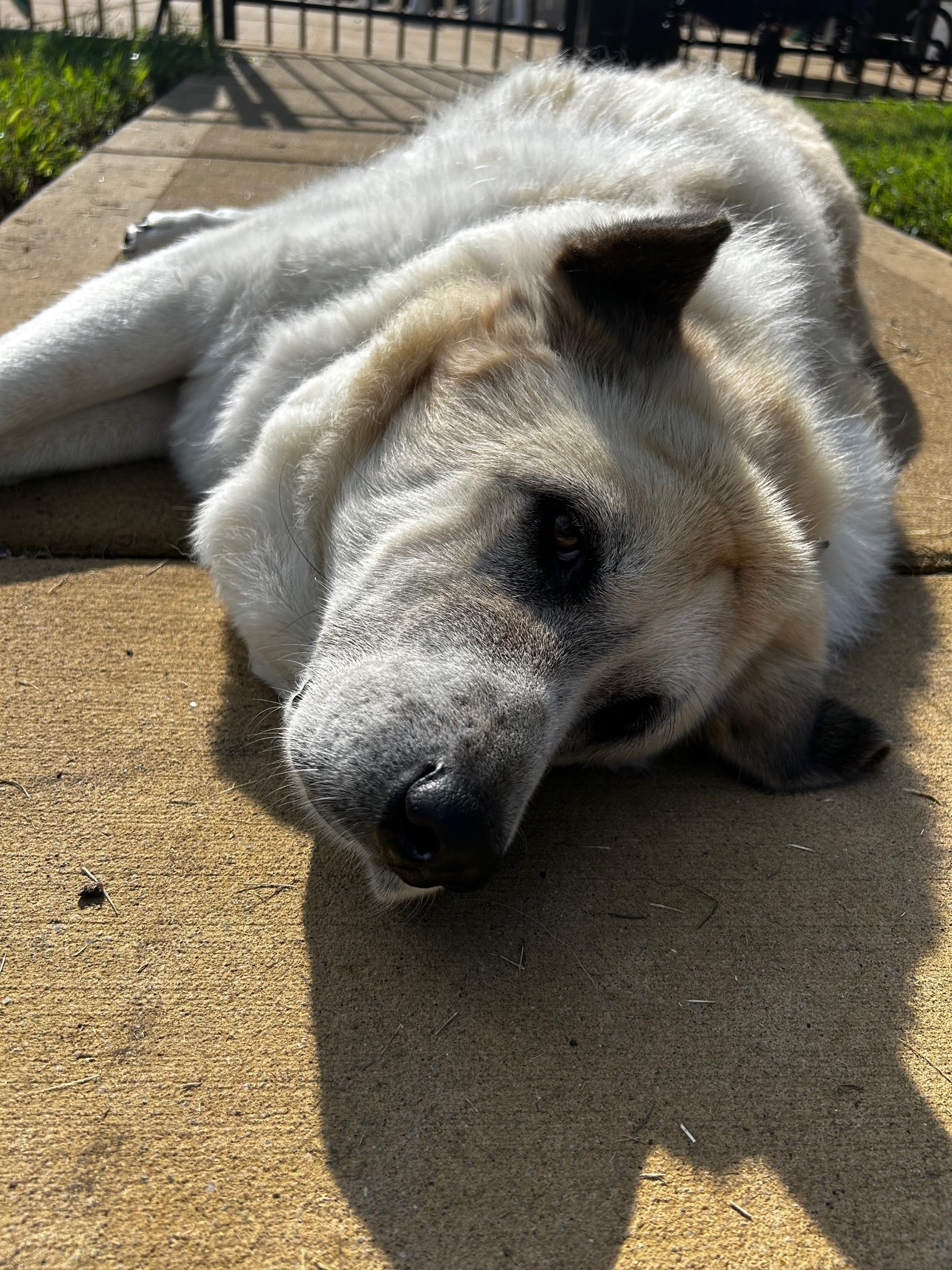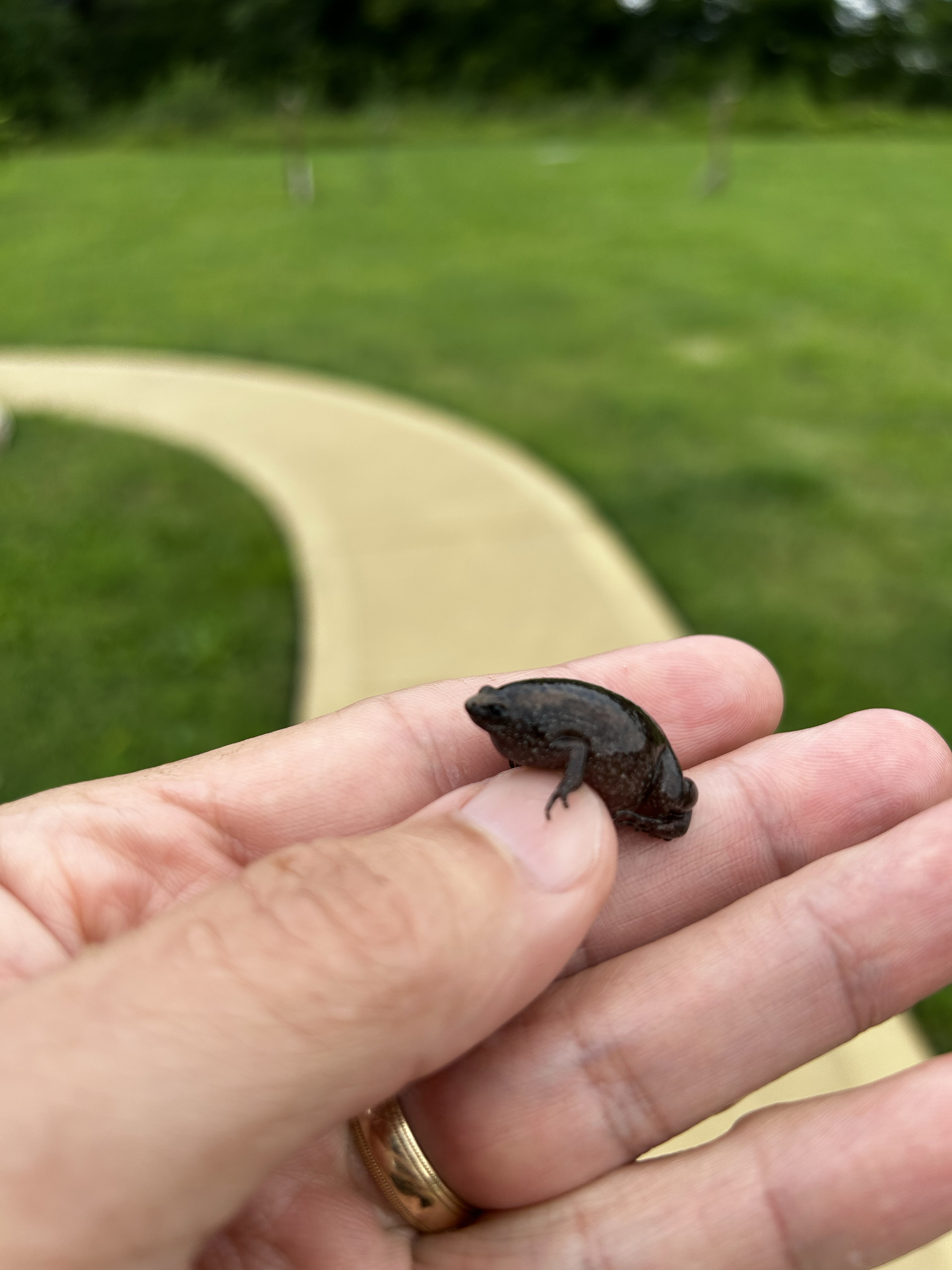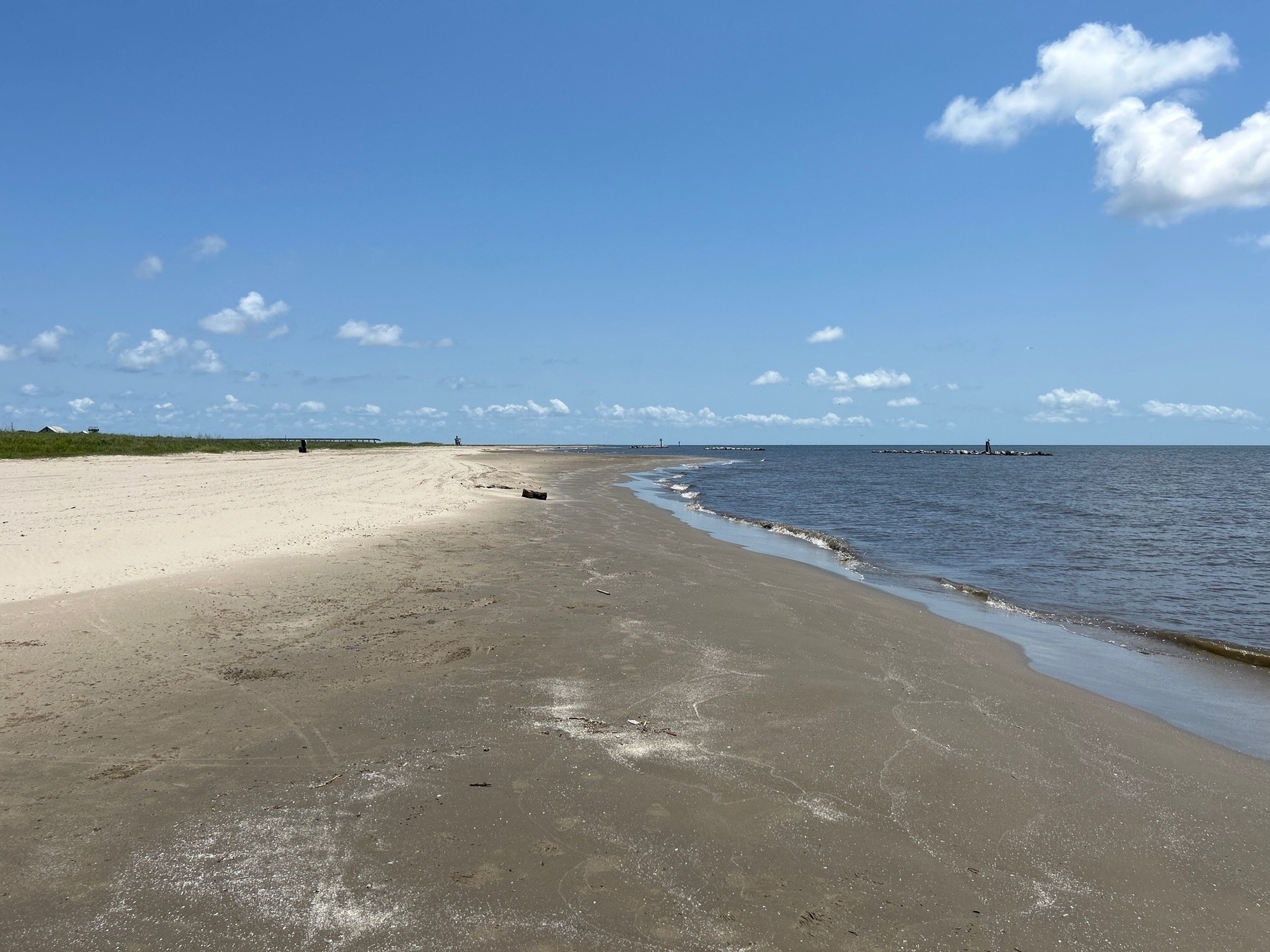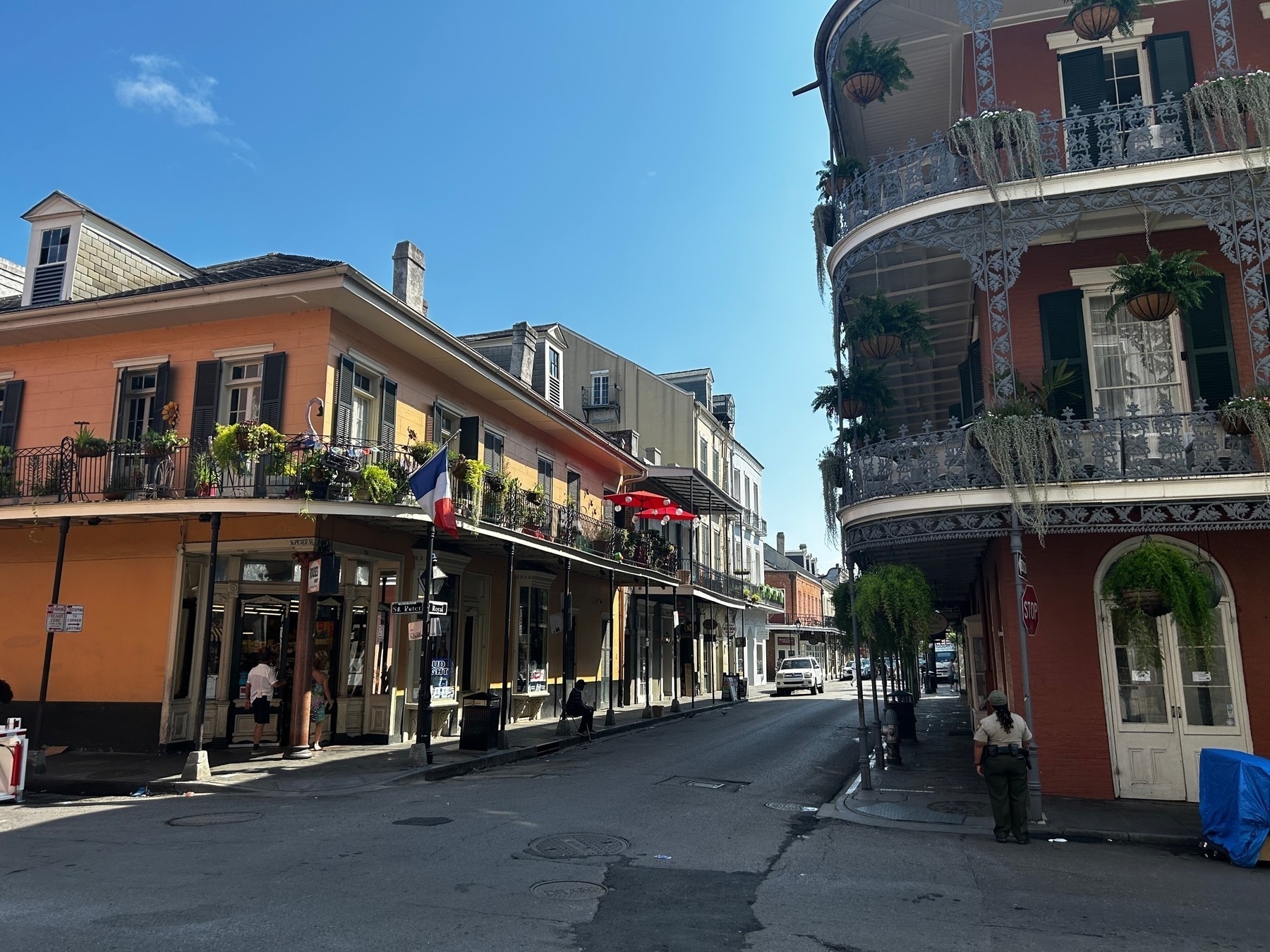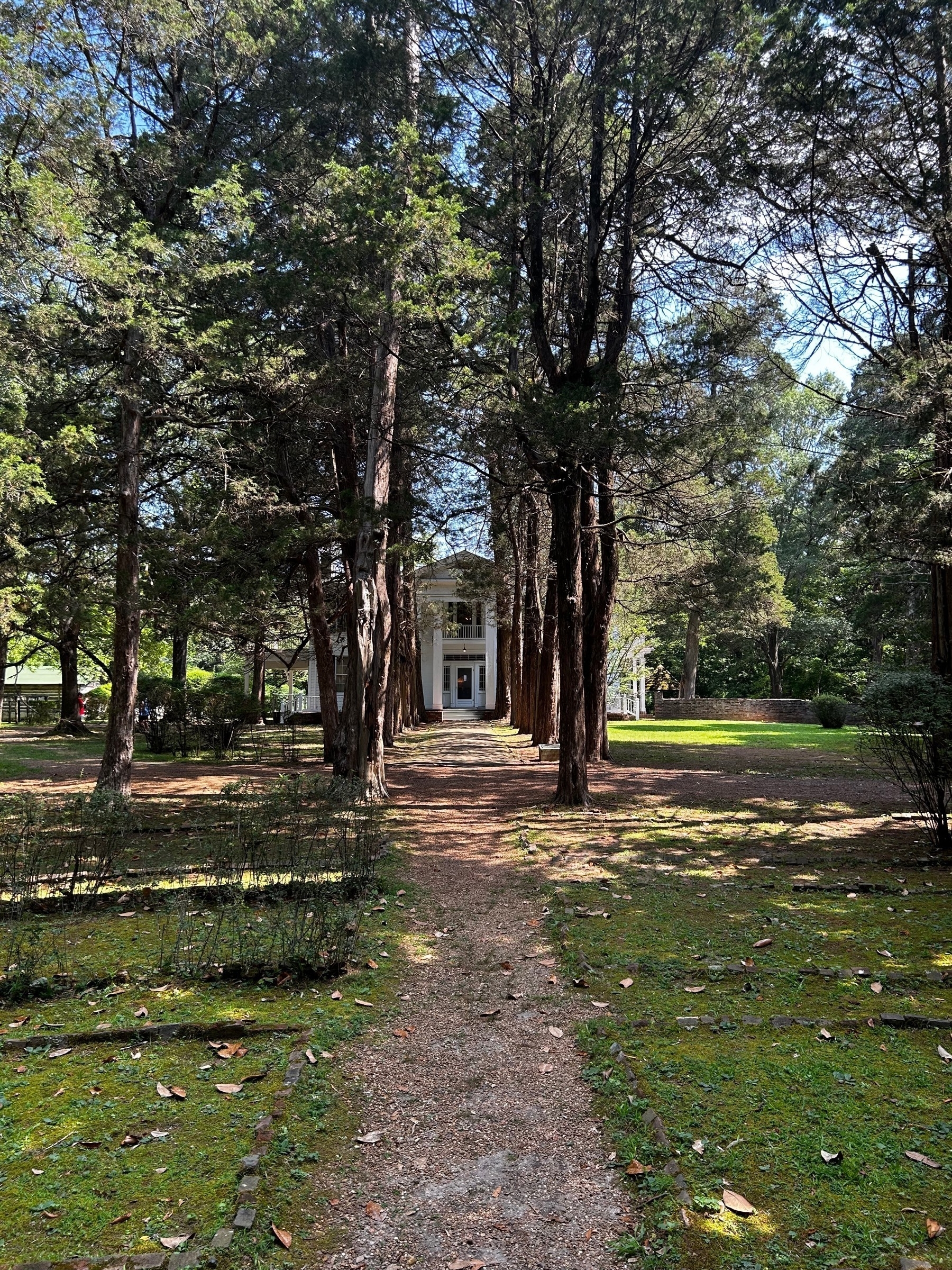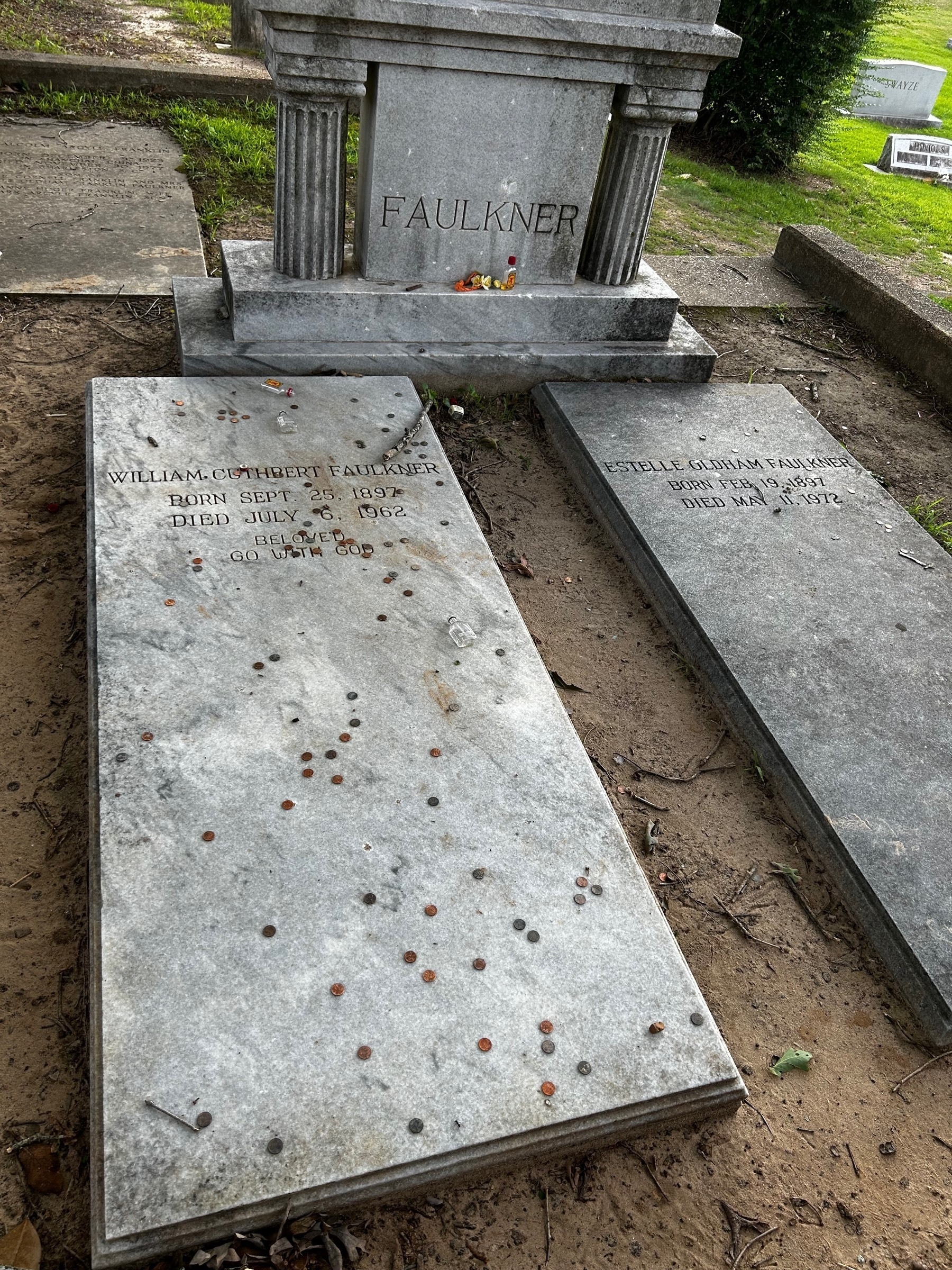Finished Selected Short Stories last night. On deck: Snopes by William Faulkner 📚
I've been thinking a lot about fictional geographies lately. I don't mean fantasy or sci-fi worlds - Middle Earth or Tattooine. I mean fictional places which are meant to exist in the real world.
A few years ago, I re-read Conrad's Nostromo and found myself looking more and more at the weirdness of its setting, the fictional South American country of Costaguana. Plot aside - and I confess that Nostromo is not my favorite Conrad novel - something about the setting always seemed sort of off to me. Distances to places are not terribly consistent, making for occasionally odd timelines. His occasional use of Spanish is also not-quite-right. The whole package feels very much like what it is - a novel written by someone who had heard and read a bit about the area and then decided to write a novel set there. This was annoying at first, but then I came to consider that - at least in terms of Costaguana's geography - the topographical fluidity was more of a feature than a bug. The country sort of wavers between minimalist set-dressing, like the production of King Lear, in which the action takes place solely in and around a mockup of Stonehenge, and a sort of mythical landscape along the lines of Toto's "Africa" I thought about this for a long time, and dreamed of producing mock-vintage travel posters in the style of the Pan Am glory days advertising Clipper service to Sulaco.
Costaguana hovers in the back of my mind as I'm starting to dig deeper into Faulkner's works, most of which are set in the fictional Yoknapatawpha County, MS. Comparing the two geographies is probably grossly unfair; Conrad set a single novel in South America and it's not clear if ever personally set foot in Colombia or Venezuela, the likeliest inspirations. Faulkner based Yoknapatawpha on his native Lafayette County, substituting Jefferson for real-life Oxford and setting nearly all of his intergenerational novels and short stories there. He lived there, and other than the place names and general topography, the descriptions of the landscape, trees, and birds all have the ring of truth that only an eyewitness can give. The county itself feels like an additional, silent, omnipresent character. I also find myself developing deep attachment to particular places and maybe that's one reason why Faulkner's attention to location/place has gained such mental purchase with me. The general region of northern Mississippi isn't far removed from our home in Middle Tennessee. There might be less limestone in Oxford, but the pine hills, cultivated fields, and river bottoms are about as universally Southern as things get. When he writes about "a grove of locusts and mulberries across the road," he might as well be describing the front quarter of our yard.
Science we can all get behind.
One of his studies had led him to an unusual conclusion: Among diabetics, eating half a cup of ice cream a day was associated with a lower risk of heart problems. Needless to say, the idea that a dessert loaded with saturated fat and sugar might actually be good for you raised some eyebrows at the nation’s most influential department of nutrition.
For 20 years now, I have been heading from my native Vermont to the American West—Utah, Arizona, Nevada, Southern California—to hike and camp in the desert. Or, as the New Testament would have it, the eremos. That is the ancient Greek word for wilderness, a lonely place of naked rock, blazing sun and humming silence. And maybe, if you pray and pray, if you genuinely open yourself, it is a place of divine presence, too.
Camping with the Desert Fathers, Leath Tonino
Overheard in the frozen food section of the supermarket today:
Little boy: Oh! Do we need ice cream?
Dad: Nooo we do not need ice cream. pushes cart faster
I nearly interrupted with “Young sir, at our house, in accord with divine law, there is always a need for ice cream. Please select one, stash it in our cart, and drop by later today to help eat it.”
Currently reading: Selected Short Stories by William Faulkner 📚
I finished The Gulf last night, and it was great. I felt like I was reading the history of an old childhood neighborhood - so many familiar places came up, and now I've got a quiet urge to go see the Texas part of the Gulf Coast and punch the last few places on the ticket. The last few sections on oil spills, industrial pollution, mindless development, and estuarine degradation are depressing as hell, but the recovery/restoration success stories give me hope.
Hesiod's late summer vibe
We were just blessed with a couple of breezy, low-humidity days, lack of nearby mountain peaks notwithstanding. Still a bit to go until August, but the annual cicadas around here are well into Their Summer Noise Thing, and the sound called to mind this bit from Works and Days:
When the thistle blooms and the chirping cicada
sits on trees and pours down shrill song
from frenziedly quivering wings in the toilsome summer,
then goats are fatter than ever and wine is at its best;
women’s lust knows no bounds and men are all dried up,
because the dog star parches their heads and knees
and the heat sears their skin. Then, ah then,
I wish you a shady ledge and your choice wine,
bread baked in the dusk and mid-August’s goat milk
and meat from a free-roving heifer that has never calved -
and from firstling kids. Drink sparkling wine,
sitting in the shade with your appetite sated,
and face Zephyr’s breeze as it blows from mountain peaks.
The apples are coming along nicely. These are either Gala or Liberty, I can’t recall which. We have a couple of Arkansas Blacks but they’re still small. Even so there are a few fruits on each of those too.
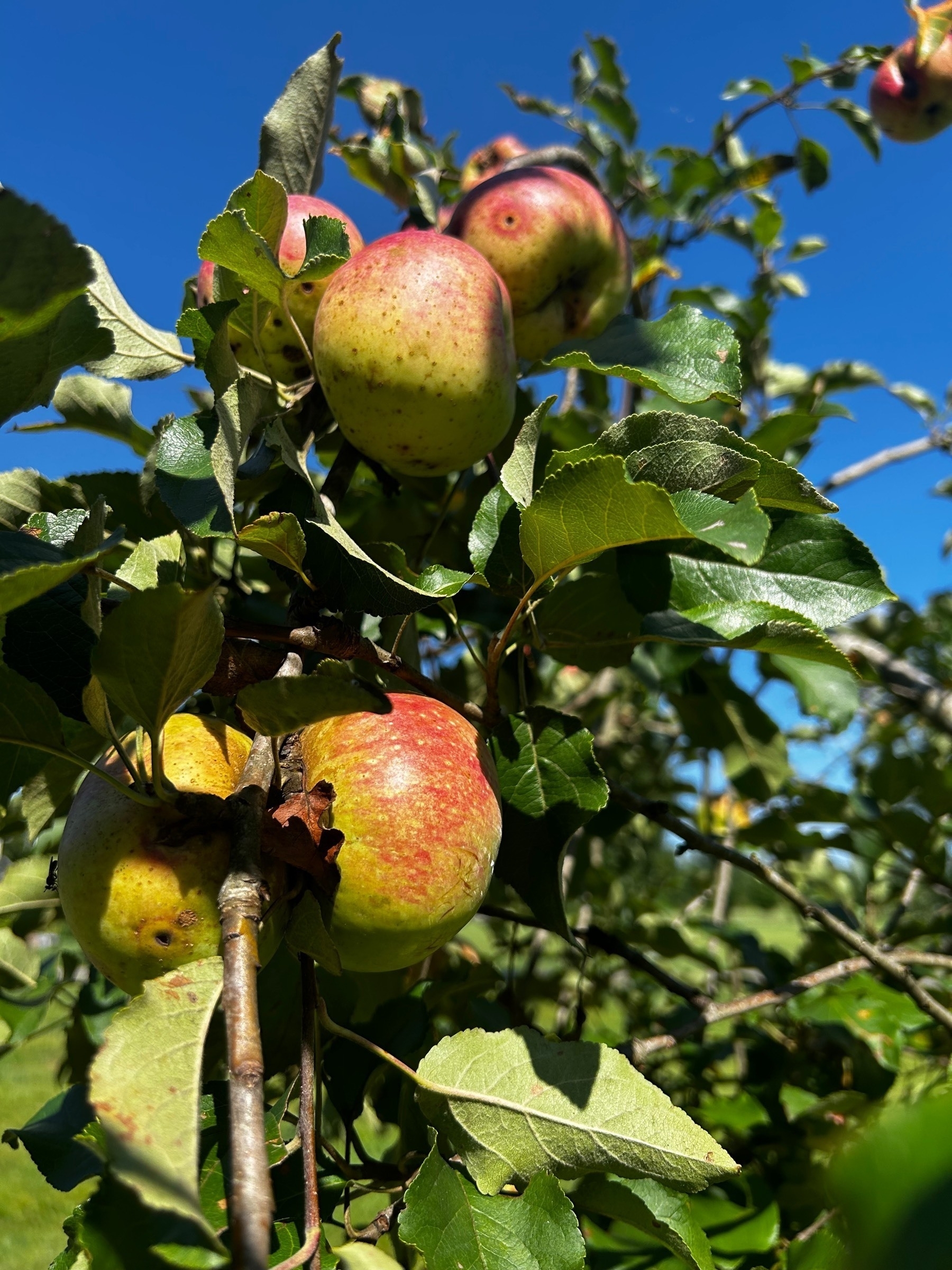
Two from Evagrius
32. Many times while I was at prayer, I would keep asking for what seemed good to me. I kept insisting on my own request, unreasonably putting pressure on the will of God. I simply would not leave it up to his Providence to arrange what he knew would turn out for my profit. Finally, when I obtained my request I became greatly chagrined at having been so stubborn about getting my own way, for in the end the matter did not turn out to be what I had fancied it would.
and
60. If you are a theologian you truly pray. If you truly pray you are a theologian.
— from Chapters on Prayer, trans. John Eudes Bamberger
Bamberger notes that number 60: "...is one of the key passages for the full understanding of the Evagrian identification of contemplation with prayer."
The mystery of patience
Fr. Michael Casey, OCSO writes about the virtue of patience throughout the Western monastic tradition, then explicates it as a mystery in this beautiful passage below. In order to arrest anger, I sought to cultivate patience. In cultivating patience, we seek to open the expanse of the love of Christ within us, providing a boundless sea in which the hurts we encounter - our own or those of others - can dissolve away.
“The Virtue of Patience in Western Monastic Tradition.” Cistercian Studies 21, no. 1 (1986): 3–23.There is a mystery involved in patience. It may be explained thus. Often when we know the full story behind some set of circumstances we are happy to endure inconvenience and even pain. Once we have perceived that the hostile actions of others really derive from their own suffering and not from malice in our regard, it becomes easier to anticipate and endure rough treatment at their hands. In fact, in dealing with another individual, we are encountering somebody who is severely scarred by the malice and indifference of others. If we really understood how much a victim this other person is, we would be compassionate and not condemnatory. What he is doing is handing on the evil that was done to him and we are the recipients. Our pain has its ultimate origins, perhaps, in the first human beings. Each generation is wounded and perpetuates its pain by inflicting it on others. Genuine Christian patience calls a halt to this seemingly inevitable transmission. It receives evil and instead of passing it on, it absorbs it. This line of malice is not continued; it goes no further. Injuries are not repeated; the process is halted. Patience puts an end to the endless cycle of mutual hurt. In his lifetime this is what Christ did and it is to this that he calls us.
The Three Angers
The Sayings contain several mentions of anger and the importance of controlling it. Abba Hyperichius said that “the monk who cannot control his tongue when he is angry, will not control his passions at other times,” and Amma Synclectica reminds us that while struggle with anger is difficult, we should not allow the sun to set on it: ‘Why hate the man who has grieved you? It is not he who has done wrong, but the devil. Hate sickness but not the sick person.” Abba Poemen finally gives us an important insight into the movement of passions through the individual. When asked by a brother what it means to not ‘render evil for evil,’ Poemen answers:
Passions work in four stages – first in the heart; secondly, in the face; thirdly, in words; and fourthly it is essential not to render evil for evil in deeds. If you can purify your heart, passion will not come into your expression; but if it comes into your face, take care not to speak; but if you do speak, cut the conversation short in case you render evil for evil.
Evagrius also said, “Prayer is the seed of gentleness and the absence of anger.” If a monk cannot be free of anger without becoming practiced in prayer, then, as Douglas Burton-Christie writes, the reverse is also true: the desire for retaliation can embed itself so deeply into the individual's heart that prayer becomes impossible. While the ultimate goal is to eliminate anger completely from the heart, we can first work to eliminate the effects of disordered anger. To this end, it is imperative to arrest its movement. The first step is understanding the different kinds of anger and how they manifest themselves.
Thanks to C.S. Lewis, it has become something of a commonplace that the Greeks understood and named love in four different ways – erōs, storgē, philia, and agapē. In Cassian’s fifth conference, Abba Serapion describes the three kinds of anger. The first of these is thumos, which blazes up suddenly within. Next is orgē, manifesting itself in deeds and effects of indignation. This sort of anger may be vocally silent but quite loud in the slamming of doors and stomping of feet. Finally, there is mēnis, which like thumos erupts internally but is “held over for days and seasons.” Mēnis is an enduring anger; Greek lexicons refer to it as the wrath of the gods and worshipped heroes. All of these, Serapion tells us, must be condemned with equal horror. I find myself susceptible to all three, mēnis in particular. Apparently, I'm not alone - Cassian alludes to a similar weakness in Institutes, 8.XI:
...what is to be said of those persons (and this I am unable to mention without shame) on whose implacability even sundown itself places no limits and who draw it out for days on end?
Having named the species of anger and understood their movements from the heart, through the intellect, and thus outward to others, I entered into seven days of spiritual exercises ordered towards two ends. The first goal was to identify the occasions of anger and recollect myself quickly by naming the species and understanding its movement within. This activity serves a larger goal: cultivating patience with myself and others as I seek to eliminate anger at its roots within me. Genuine Christian patience, writes Michael Casey, breaks the inevitable transmission of hurt by receiving what is evil from others and absorbing it. Injuries are not repeated, and the endless cycle of mutual hurt is broken. As someone preparing for diaconal ministry configured to Christ the Servant, I desire to cultivate similar patience with others with the help of God’s grace.
My first reflection is that the systematic identification of anger as a principal vice was fruitful in two ways. First, the detailed understanding of thumos, orgē, and mēnis helped me classify the types of anger within me in ways that have eluded me. The psychological insights of the desert fathers increased my awareness that while anger is rooted within me, it is ‘activated’ from without, and as it ‘enters’ me, it ‘exits’ towards the others around me. Poemen’s description of the movement of passions also provided a sort of roadmap for arresting the movement – heart, face, speech, and deed. With God’s grace, each of these manifestations can be met in sequence, starting from eliminating the external deeds of anger deeds, then progressing inward toward the heart. This approach – working in small steps – provides against feeling overwhelmed by the generic advice provided by other desert fathers.
I had success remaining mindful throughout the day and frequently called Poemen’s word on patience ("Whatever obstacle presents itself to you, it can be overcome by patience.") to mind. The examen was a little hit-or-miss, but I intend to continue trying to make it a regular practice in my nightly devotions. My second reflection is the observation that this was an ideal time for attempting an exercise of this sort, as my personal schedule has suddenly become much calmer relative to the prior few months. This mercy I will credit to God’s providence. I have not yet removed the bracelet and will continue wearing it.
The general approach to this practice will be very useful in pastoral situations. I can imagine a course of readings on Evagrius and Cassian on the principal vices, situating them first within the desert movement and demonstrating that their psychological insights remain intact in the modern age. The later desert writings – Cassian in particular – also show a moderation that could temper the difficulty and opacity of some of the Sayings. Finally, the course would rely heavily on lectio divina based on the Psalms, which, as Athanasius points out, are the scriptures most suitable for recitation in the first person. Similar to this class, the final outcome of this process would be the individual’s identification of a concrete, accessible practice which remedies a particular weakness or inculcate a virtuous habit. This complete course may lend itself well to a retreat format, which would have the additional benefit of physical withdrawal to a place of relative solitude.
N.B. - this post was adapted from parts of a recent paper; for the sake of completeness, I've included the entire bibliography:
Athanasius. The Life of Antony and the Letter to Marcellinus. Translated by Robert C. Gregg. The Classics of Western Spirituality. New York: Paulist Press, 1980.
Burton-Christie, Douglas E. The Word in the Desert: Scripture and the Quest for Holiness in Early Christian Monasticism. New York, NY: Oxford Univ. Press, 1993.
Casey, Michael. “The Virtue of Patience in Western Monastic Tradition.” Cistercian Studies 21, no. 1 (1986): 3–23.
Cassian, John. The Conferences. Translated by Boniface Ramsey. Ancient Christian Writers, no. 57. New York: The Newman Press, 1997.
———. The Institutes. Translated by Boniface Ramsey. Ancient Christian Writers, no. 58. New York: Newman Press, 2000.
Evagrius. The Praktikos and Chapters on Prayer. Translated by John Eudes Bamberger. Cistercian Studies Series, no. 4. Spencer, Mass: Cistercian Publications, 1970.
Ward, Benedicta, ed. The Desert Fathers: Sayings of the Early Christian Monks. Penguin Classics. London ; New York: Penguin Books, 2003.
———. The Sayings of the Desert Fathers: The Alphabetic Collection. Revised. Collegeville, Minnesota: Liturgical Press, 1984.
The road trip was lovely. We set the GPS to 'avoid all highways' and took our time meandering down to Gulfport, MS, then to New Orleans for a few days before heading north to Oxford. We ate and drank well, stomped all over the Garden District and French Quarter, drove out to Grand Isle to see some of the delta, bought a pile of books, and came home to find the house still standing. It was hot and steamy, and we had a great time. We've never been to Oxford, and it was the perfect end to the trip, both to prime the pump for more Faulkner (pics below) and to visit with a dear friend of my wife who teaches there. After Oxford, we trekked across southeastern TN back toward home, which included a substantial stretch of the Buford Pusser Memorial Highway. Friends, I maintained the speed limit just to be safe.
I am enjoying the downtime before my studies ramp back up in August. I'm heading into my final online class, which means this is the last time I'll need to juggle multiple classes at once.
Currently reading: The Gulf: The Making of an American Sea by Jack E. Davis 📚
Currently reading: New Orleans Sketches by William Faulkner 📚
